About Meth Addiction
Learn More About Meth Addiction
Methamphetamine, which is often referred to as meth, is a powerful and highly addictive illegal stimulant that is derived from amphetamine. Meth abuse, which can occur via smoking, snorting, swallowing, or injecting the drug, triggers the release of dopamine, a neurotransmitter that is associated with sensations of happiness and motivation, within the user’s brain. When an individual uses meth, he or she experiences an almost immediate sense of profound confidence and intense euphoria. These initial effects are eventually followed by a physical and psychological crash, which often prompts users to ingest more of the drug in order to once again attain an elevated mood and increased energy levels.
Methamphetamine abuse can quickly descend into a destructive cycle of addiction that can overwhelm a person’s ability to live a normal life. Meth addiction can have a profoundly devastating impact on a person’s physical, mental, emotional, and social wellbeing. Fortunately, effective comprehensive treatment options exist that can help a person emerge from the depths of meth addiction and resume his or her pursuit of a healthy drug-free future.
Statistics
Meth Addiction Statistics
Information collected as part of the National Survey on Drug Use and Health (NS-DUH) reveals that about 5 percent of the U.S. population ages 12 and above have engaged in methamphetamine abuse at least once in their lives. NS-DUH data also indicates that about 1.2 million Americans have abused meth in the past year, with about 450,000 having done so in the previous 30 days.
The annual Monitoring the Future (MTF) report notes that methamphetamine abuse among adolescents and teenagers has been steadily decreasing over recent years, but still remains troublingly prevalent. Between 2010 and 2014, the meth abuse rate among high school seniors fell from 2.3 percent to 1.9 percent. During the same period, the meth abuse rate among high school sophomores fell from 2.5 percent to 1.4 percent; among eighth graders, the rate fell from 1.8 percent to 1.0 percent.
As one way of documenting the dangers of methamphetamine abuse, The Drug Abuse Warning Network (DAWN) notes that meth abuse is responsible for more than 100,000 visits to emergency rooms or urgent care centers every year in the United States.
Causes & Risks
Causes and Risk Factors for Meth Addiction
A person’s susceptibility to developing a substance use disorder involving meth or any other addictive substance is usually the result of a combination of internal and external influences. The following are among the genetic and environmental factors that have been identified by experts as playing significant roles in determining whether or not a person will develop a drug problem. Consider the following:
Genetic: Decades of research into the nature of addiction documents the importance of genetics. Individuals whose parents or siblings have struggled with chemical dependency may be as much as five times more likely to also develop an addiction than are people whose families have no history of drug abuse. The role of genetics in the development of addiction has been supported by studies involving twins who were raised separately and adopted children who were raised alongside their adoptive parents’ biological offspring. As geneticists gain a clearer understanding of the influence of genetics, several individual genes and clusters of genes have been identified as possibly being highly influential in determining whether or not a person will become dependent upon methamphetamine or another substance.
Environmental: Living in poverty, experiencing extreme amounts of stress or pressure, and associating with peers who abuse drugs have all been identified as strong environmental influences on a person’s susceptibility to developing a drug abuse problem. Being abused, neglected, assaulted, or otherwise violently victimized can also be a powerful environmental predecessor to substance abuse and addiction. The presence of addiction in a person’s family can also be an environmental influence as well as a genetic one, as people who were raised in households where drugs were used openly are more likely to engage in this behavior than are individuals who grew up in drug-free homes.
Risk Factors:
- Family history of drug abuse and addiction
- Family history of mental illness
- Prior abuse of or addiction to other substances
- Personal history of mental health problems
- Age (meth use is most common among younger adults)
- Race (meth abuse is most common among white Americans)
- Being a victim of child abuse or neglect
- Being a victim of attack, assault, or other form of violence
- Exposure to chronic stress and pressure
- Having an insufficient personal support network
- Living in an impoverished neighborhood or community
Signs & Symptoms
Signs and Symptoms of Meth Addiction
Evidence that a person has been engaging in methamphetamine abuse can vary depending upon several factors, but certain common symptoms are likely to eventually become evident. The following are among the more common signs that may indicate that a person has been abusing or become addicted to methamphetamine:
Behavioral symptoms:
- Withdrawing from family and friends
- Failing to perform to potential at work or in school
- Pattern of unexcused and/or unexplained absences from work or school
- Changing one’s peer group
- Becoming secretive or deceptive about one’s activities and whereabouts
- Displaying sudden outbursts of unprovoked anger
- Frequently attempting to borrow or steal money
- Staying awake for extended periods of time
- Engaging in obsessive repetitive behaviors
- Acting with uncharacteristic energy
Physical symptoms:
- High blood pressure
- Increased pulse and heart rate
- Insomnia
- Hypersomnia
- Tics and twitches
- Losing significant amount of weight
- Poor personal hygiene
- Profound damage to teeth and gums
- Scabs and sores on face, arms, and other body parts
Cognitive symptoms:
- Confusion and disorientation
- Impaired judgment
- Poor decision-making skills
- Memory problems
- Hallucinations
- Delusions
- Paranoia
Psychosocial symptoms:
- Agitation and irritability
- Alternating periods of grandiosity and self-loathing
- Suicidal ideation
- Dysphoria (being profoundly uneasy or dissatisfied)
Effects
Effects of Meth Addiction
The impact of chronic meth abuse can be devastating. When left untreated, meth abuse can damage a person’s physical health, mental wellbeing, emotional stability, and socioeconomic status. The following are among the many detrimental effects of meth abuse:
- Irreversible cognitive impairment
- Extreme damage to physical appearance
- Heart damage
- Loss of muscle tissue and bone density
- Weakened immune system
- Contracting HIV, hepatitis B, or hepatitis C due to injection drug use
- Strained or ruined interpersonal relationships
- Family problems, including separation, divorce, and loss of child custody
- Academic failure
- Job loss
- Legal problems
- Financial ruin
- Suicidal thoughts or actions
- Death
Co-Occurring Disorders
Meth Abuse & Co-Occurring Disorders
Many people who become dependent upon methamphetamine are also struggling with one or more co-occurring mental health conditions. The following are among the more common disorders that have been diagnosed in people who have become addicted to meth:
- Other substance use disorders
- Anxiety disorders
- Attention-deficit/hyperactivity disorder (ADHD)
- Major depressive disorder
- Persistent depressive disorder
- Schizophrenia
- Bipolar disorder
- Posttraumatic stress disorder (PTSD)
Withdrawal
Effects of Meth Withdrawal & Overdose
Effects of meth withdrawal: When a person has become dependent upon methamphetamine, abruptly stopping or drastically reducing one’s meth use can result in several unpleasant and potentially dangerous symptoms. Depending upon the severity of a person’s dependence, these symptoms can occur within 24 hours of last use and can last for weeks. The following are common symptoms experienced by individuals who are going through meth withdrawal:
- Powerful cravings for meth
- Anxiety
- Anger, agitation, and irritability
- Depression
- Nausea, vomiting, and diarrhea
- Excessive perspiration
- Psychomotor agitation or retardation
- Increased appetite
- Overpowering fatigue
- Insomnia or hypersomnia
- Vivid nightmares
- Paranoia
Effects of meth overdose: When a person ingests meth in a quantity or potency that exceeds his or her body’s ability to safely metabolize, that person will experience several potentially fatal overdose symptoms. Anyone who experiences the following symptoms after abusing methamphetamine should be immediately brought to the attention of a qualified medical professional:
- Respiratory distress
- Dangerously high body temperature
- Dangerously rapid heart rate
- Cardiac arrest
- Seizure
- Renal failure
- Brain aneurysm
- Stroke
- Loss of consciousness
- Coma
















